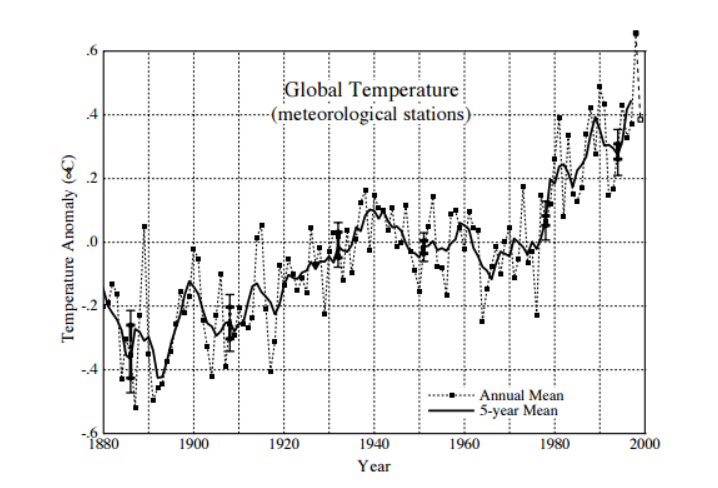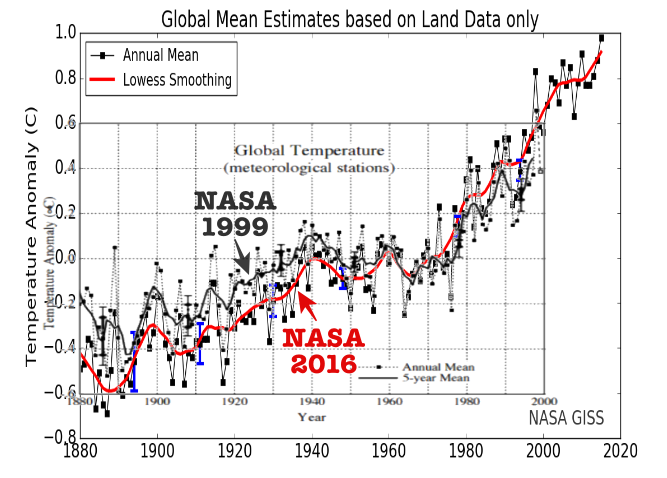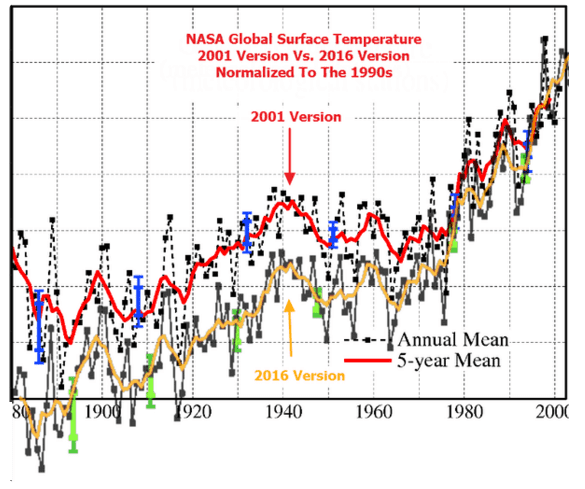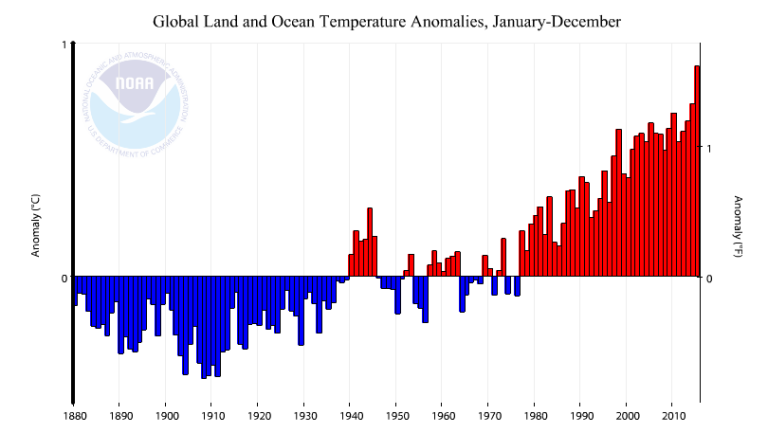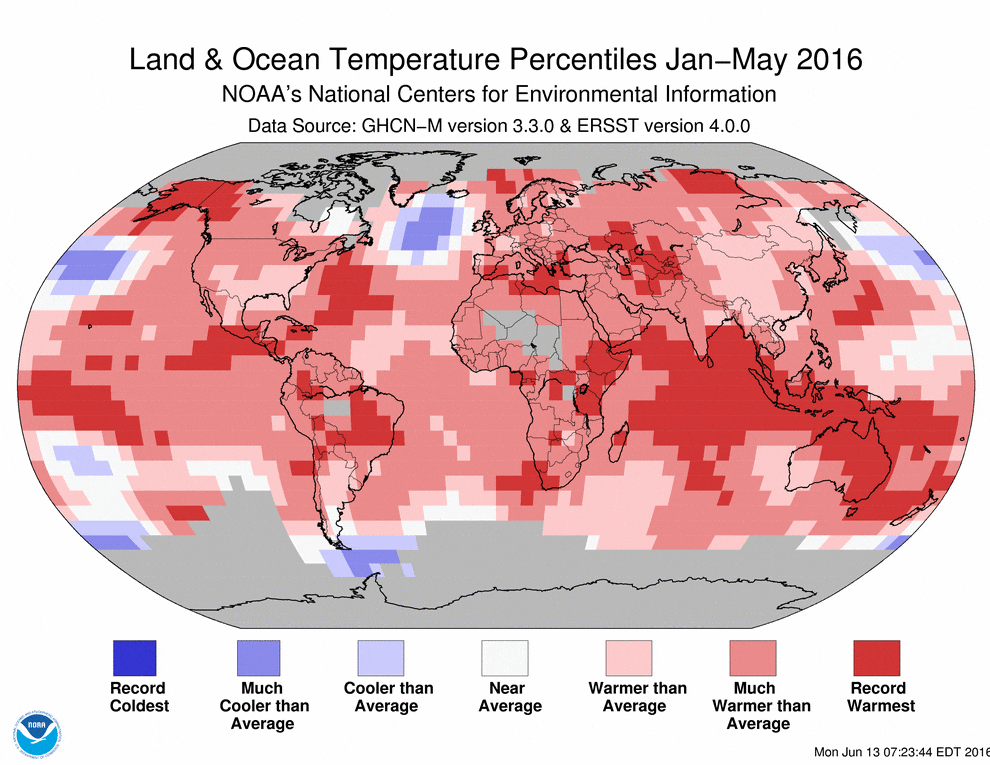email doc# 0907686380
From: mann.geo.umass.edu
Subject: Re: climate of the last millennia...
Date: Tue, 6 Oct 1998 11:06:20 -0400 (EDT)
Dear all,
I just wanted to thank Keith for his comments. They are right on target.
There is indeed, as many of us are aware, at least one key player in the
modeling community that has made overly dismissive statements about the
value of proxy data as late, because of what might be argued as his/her
own naive assessment/analysis of these data. This presents the danger of
just the sort of backlash that Keith warns of, and makes all the more
pressing the need for more of a community-wide strategizing on our part.
I think the workshop in Jan that Peck is hosting will go far in this
regard, and I personally am really looking forward to it!
cheers,
mike.
"Community-wide strategizing" That sound a lot like Adolf Hitler code such as "Sonderbehandlung" for dissenters.
Anyway here is an example of what got Mann`s nose out of joint:
re.:
Climatic Research Unit, University of East Anglia,
> Norwich, NR4 7TJ, United Kingdom
I will send you the time series you need in a minute for the Central
west Greenland Stack...
And some other bits and pieces,,, The NGRIP record has the trend in it
that is no doubt closer to the truth for the fixed elevation temperature
history. But even there one could need a correction for elevation
change. The elevation corrected south GRIP Holocene has a very strong
negative delta trend in it and I expect there should be some correction
done to the north GRIP record too,, eventually I think they should all
come out looking like our records from Northern Canada. Now at least
ice core records have some low frequencies to correct..
not like your bloody trees that can not remember one century to the next,,,
And then there is this one by another climatologist:
email doc #0981859677
Cc: "P. Dietze" usgcrp.gov, Michael E Mann
> the first is Keith Briffa's rather comprehensive treatment of getting
> climate variations from tree rings: Annual climate variability in
> the Holocene: "interpreting the message of ancient trees", Quaternary
> Science Reviews, 19 (2000) 87-105. It should deal with many of the
> questions people raise about using them to determine temperatures.
Take this from first principles.
A tree only grows on land. That excludes 70% of the earth covered by
water. A tree does no grow on ice. A tree does not grow in a desert. A
tree does not grow on grassland-savannahs. A tree does not grow in
alpine areas. A tree does not grow in the tundra
We are left with perhaps 15% of the planet upon which forests
grow/grew. That does not make any studies from tree rings global, or
even hemispheric.
The width and density of tree rings is dependent upon the following
variables which cannot be reliably separated from each other.
sunlight - if the sun varies, the ring will vary. But not at night of
course.cloudiness - more clouds, less sun, less ring.
pests/disease - a caterpillar or locust plague will reduce
photosynthesis access to sunlight - competition within a forest can disadvantage or
advantage some trees.moisture/rainfall - a key variable.
Trees do not prosper in a droughteven if there's a heat wave.
snow packing in spring around the base of the trees retards growth
temperature - finally!
The tree ring is a composite of all these variables, not merely of
temperature. Therefore on the 15% of the planet covered by trees, their
rings do not and cannot accurately record temperature in isolation from
the other environmental variables.
.
From: mann.geo.umass.edu
Subject: Re: climate of the last millennia...
Date: Tue, 6 Oct 1998 11:06:20 -0400 (EDT)
Dear all,
I just wanted to thank Keith for his comments. They are right on target.
There is indeed, as many of us are aware, at least one key player in the
modeling community that has made overly dismissive statements about the
value of proxy data as late, because of what might be argued as his/her
own naive assessment/analysis of these data. This presents the danger of
just the sort of backlash that Keith warns of, and makes all the more
pressing the need for more of a community-wide strategizing on our part.
I think the workshop in Jan that Peck is hosting will go far in this
regard, and I personally am really looking forward to it!
cheers,
mike.
"Community-wide strategizing" That sound a lot like Adolf Hitler code such as "Sonderbehandlung" for dissenters.
Anyway here is an example of what got Mann`s nose out of joint:
re.:
Climatic Research Unit, University of East Anglia,
> Norwich, NR4 7TJ, United Kingdom
I will send you the time series you need in a minute for the Central
west Greenland Stack...
And some other bits and pieces,,, The NGRIP record has the trend in it
that is no doubt closer to the truth for the fixed elevation temperature
history. But even there one could need a correction for elevation
change. The elevation corrected south GRIP Holocene has a very strong
negative delta trend in it and I expect there should be some correction
done to the north GRIP record too,, eventually I think they should all
come out looking like our records from Northern Canada. Now at least
ice core records have some low frequencies to correct..
not like your bloody trees that can not remember one century to the next,,,
And then there is this one by another climatologist:
email doc #0981859677
Cc: "P. Dietze" usgcrp.gov, Michael E Mann
> the first is Keith Briffa's rather comprehensive treatment of getting
> climate variations from tree rings: Annual climate variability in
> the Holocene: "interpreting the message of ancient trees", Quaternary
> Science Reviews, 19 (2000) 87-105. It should deal with many of the
> questions people raise about using them to determine temperatures.
Take this from first principles.
A tree only grows on land. That excludes 70% of the earth covered by
water. A tree does no grow on ice. A tree does not grow in a desert. A
tree does not grow on grassland-savannahs. A tree does not grow in
alpine areas. A tree does not grow in the tundra
We are left with perhaps 15% of the planet upon which forests
grow/grew. That does not make any studies from tree rings global, or
even hemispheric.
The width and density of tree rings is dependent upon the following
variables which cannot be reliably separated from each other.
sunlight - if the sun varies, the ring will vary. But not at night of
course.cloudiness - more clouds, less sun, less ring.
pests/disease - a caterpillar or locust plague will reduce
photosynthesis access to sunlight - competition within a forest can disadvantage or
advantage some trees.moisture/rainfall - a key variable.
Trees do not prosper in a droughteven if there's a heat wave.
snow packing in spring around the base of the trees retards growth
temperature - finally!
The tree ring is a composite of all these variables, not merely of
temperature. Therefore on the 15% of the planet covered by trees, their
rings do not and cannot accurately record temperature in isolation from
the other environmental variables.
.
Last edited:

 35 -0600 (MDT)
35 -0600 (MDT)